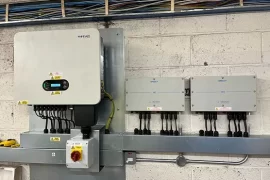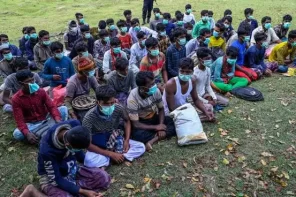Maintaining a safe workspace has become a central concern for organizations across industries. Companies face increasing pressure to comply with evolving regulations, protect the well-being of employees, and maintain operational efficiency.
This blog explores effective expert solutions for achieving a safer work environment—from practical hazard management strategies to the critical role of partnering with specialists such as industrial hygiene consulting firms for compliance.
Why Workplace Safety Deserves Your Attention
Workplace safety is more than a regulatory box-tick. It directly influences morale, productivity, and a company’s reputation. According to the National Safety Council, workplace injuries cost the U.S. economy more than $163 billion in a single year. For any business, this translates to lost work hours, potential fines, and higher insurance premiums.

Prioritizing safety fosters trust within teams and minimizes the risk of costly incidents. Addressing safety is both a legal requirement and a clear path to building a resilient workforce.
Key Elements That Shape a Safer Work Environment
Robust Risk Assessment
Identifying and analyzing workplace hazards is the first step in building safer operations. This process includes:
- Inspecting equipment and workspaces for physical hazards
- Evaluating chemical exposures
- Considering ergonomic risks that contribute to repetitive strain injuries
- Assessing mental health and psychosocial risks
Regular risk assessments help uncover issues before they escalate. Detailed records can also support compliance during audits or inspections.
Comprehensive Safety Policies
Clear, easily accessible safety protocols are the backbone of an effective safety program. Documented policies should cover:
- Emergency procedures
- Hazard reporting mechanisms
- Safe use of equipment and personal protective equipment (PPE)
- Training requirements for new and existing staff
Regular reviews ensure protocols stay current with industry standards and regulatory changes.
Engaging Employee Training
Ongoing education ensures teams understand hazard identification, emergency procedures, and safe work practices. Interactive workshops, regular drills, and accessible resources empower employees to act quickly and effectively during potential incidents. Training should be tailored to the unique risks present in each workspace.
Proactive Monitoring and Continuous Improvement
Safety is a continuous process. Companies should monitor:
- Near misses and incident trends
- Effectiveness of controls
- New scientific developments in occupational health
Feedback loops allow for swift adjustments to procedures. Encouraging an open culture of reporting helps prevent “blind spots” where hazards might persist unnoticed.
Harnessing the Expertise of Industrial Hygiene Consulting Firms
Many organizations partner with external specialists for advanced guidance on workplace safety. Industrial hygiene consulting firms, for compliance, bring deep expertise in identifying, evaluating, and controlling hazards that may not be visible to the untrained eye.
Industrial hygiene consulting firms, for compliance offer services such as:
- Indoor air quality assessments
- Noise and vibration measurement
- Chemical exposure analysis
- Respiratory protection solutions
- Customized health and safety training
These experts stay updated on regulations, from OSHA standards to state-specific laws. Their involvement helps companies avoid penalties and ensures robust occupational health programs.
Data-Driven Approaches to Safer Workspaces
Leveraging Technology
Modern safety programs benefit from digital tools that streamline monitoring and reporting. Examples include:
- Real-time air quality sensors for early hazard detection
- Wearable technology for worker health insights
- Software solutions for tracking incident and maintenance records
These tools provide valuable data for decision-makers and facilitate quicker responses to emerging risks.
Setting Measurable Safety Goals
Proactive organizations use metrics to track progress. Common benchmarks include:
- Reduction in incident frequency rates
- Employee participation in training sessions
- Percentage of hazards corrected within set timeframes
Regularly reviewing performance against these benchmarks supports ongoing improvement.
Building a Culture of Safety
Ultimately, procedures and policies only succeed within a culture that values safety at every level. Leadership must be visible champions of these initiatives, encouraging staff at all levels to voice concerns and participate in safety programs. Recognition of positive safety behaviors further integrates safety into daily routines.
Practical strategies include:
- Recognizing employees who identify and address risks
- Including safety discussions in regular team meetings
- Encouraging collaborative problem-solving around workplace hazards
Next Steps for a Healthier Workplace
A safer work environment is the result of strategic planning, skilled expertise, and a commitment to vigilance. Regularly review risks, refresh policies, and leverage both internal and external expertise. Staying informed about the latest developments in industrial hygiene, hazard control, and compliance can help your organization build a stronger, more resilient workplace.







